Bangladesh Family Planning Programme: What women and girls want matters
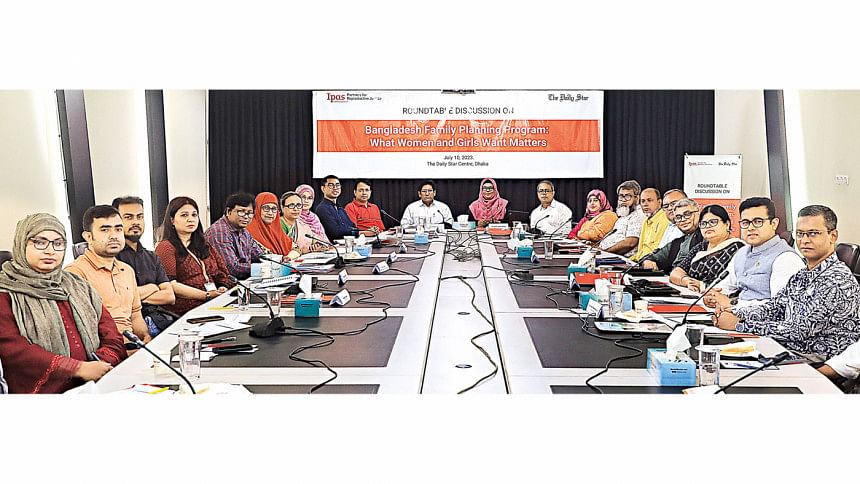
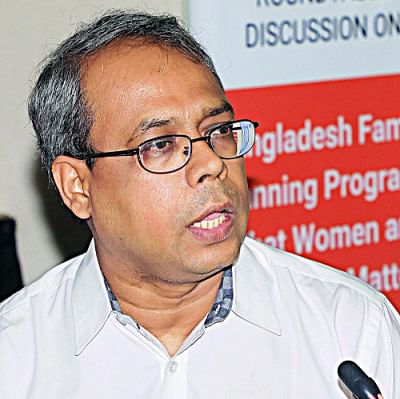
Dr Sayed Rubayet, Country Director, Ipas Bangladesh
According to recent census data, 45.4 million women in Bangladesh fall within the reproductive age category. The Family Planning Program should target this population, including both married and unmarried women.
The Total Fertility Rate (TFR) in Bangladesh reached 2.3 in 2011, slightly more than the government's target of 2.1. However, it has remained stagnant as per the survey findings of the past four Bangladesh Demographic and Health Surveys (BDHS). Family planning methods are essential to reach the target TFR, and the contraceptive prevalence rate (CPR) is a key indicator. The CPR has gradually increased from 8% to 64% since early 70s to 2022. Birth spacing has also been successful, with an average of 5 years between children, but the rate of teenage pregnancy, although reduced to 24%, requires further improvement.
In Rajshahi and Rangpur, the Contraceptive Prevalence Rate (CPR) for modern methods is 61%. Yet, the rates of early marriage (57%) and early pregnancy (31%) remain high. On the other hand, Sylhet has lower rates of early marriage and early pregnancy, despite a CPR of only 44%. This highlights that addressing early child marriage requires more than just family planning programmes. Therefore, the family planning programme should prioritise early pregnancy prevention, while all national programmes should focus on preventing early marriage as well.
After the age of 40, traditional family planning methods are used by 31% of married women, increasing to 36% for the 45-49 age group. Unintended pregnancies in this age group pose risks and can lead to maternal mortality. Equal attention should be given to both elderly women and adolescents in the reproductive age group.
Among the 64% of women who use contraceptive methods, the majority rely on short-acting and hormone-dependent options. Despite national encouragement for Long-Acting Reversible Contraception (LARC) methods such as implants and Intrauterine devices (IUDs), only 3% of women opt for these services. Raising awareness about LARC and permanent methods is crucial.
Women enter their reproductive age early and often reach their desired number of children at a young age. Until they turn 49, they have to depend on pills and endure the side effects of hormonal methods. Encouraging the use of IUDs or permanent methods can promote overall well-being, including reproductive health.
In the past, decisions on family planning were predominantly made by males. However, a significant shift has occurred over the past two decades, with 78% of couples now making joint decisions. The family planning programmes' communication strategy should target both husbands and wives to generate greater demand.
Furthermore, the media landscape is rapidly evolving. It is crucial to embrace mobile phones and social media platforms for the family planning programme.

Golam Mortaza, Editor, The Daily Star Bangla
Family planning programmes should actively target men to increase awareness and engagement. Social media has become an essential component of effective campaigns, yet there is a lack of research on its optimal utilisation in Bangladesh. Conducting further research on leveraging social media as a tool to raise awareness and disseminate the message of family planning to larger populations is crucial.

Dr. Mohammad Mainul Islam, Professor & Former Chairman, Department of Population Sciences, University of Dhaka
The BDHS 2022 highlights that pills are the most popular contraceptive method at 27%, followed by injectables at 11% and female sterilization at 5%. However, male sterilization remains low at <1. Furthermore, the discontinuation rate for condoms is higher compared to other contraceptives. It is essential to ensure male participation in family planning and raise their awareness about the situation.
Recent urban health surveys indicate a rise of approximately 6% in teenage pregnancies in non-slum areas. Family planning efforts should focus not only on slum areas but also on other vulnerable groups residing outside these areas in urban regions.
Bangladesh's favorable demographic situation with a working-age majority demands focus on health, education, governance, and employment. To fully harness the benefits of the demographic dividend, efforts to reduce child marriage are crucial. This will empower women, increase their participation, and contribute to the country's economic growth.

Professor Dr Ferdousi Begum, Immediate Past President, Obstetrical and Gynaecological Society of Bangladesh (OGSB)
Adolescents, accounting for a quarter of our population, lack awareness of the risks associated with early marriage, often leading to unplanned pregnancies. It is crucial to emphasise the importance of contraceptive usage, address challenges of discontinuation and method-switching, and improve utilisation rates. To address these issues, OGSB has partnered with IPAS and the Directorate General of Family Planning to provide training to general practitioners. Targeted areas such as Gazipur, Mirpur, and Kamrangirchor have been identified for training general practitioners, enhancing their knowledge of contraceptive pills and related SRH services. Our objective is to educate and empower general practitioners nationwide. Strengthening the numbers and capabilities of midwives is essential for effective pregnancy, childbirth, postpartum, and post-abortion family planning. The OGSB offers specialised services, training, and mentorship to midwives, ensuring their effective application of knowledge and skills. These efforts require collaboration from all the relevant stakeholders.

Mohammad Bellal Hossain, PhD, Professor, Department of Population Sciences, University of Dhaka
Bangladesh serves as a global model for family planning, with the private sector contributing to 60% and the public sector to 36% of contraceptive services. Understanding the decline in the public sector's involvement is crucial.
Rangpur and Rajshahi exhibit different Total Fertility Rates (TFRs) of 2.5 and 2 respectively, both with a contraceptive usage rate of 61%. Investigating the factors behind these variations is necessary for progress.
The 2022 census projects a population growth rate of 1.22%, estimating a population of 207 million by 2061. Considering this projected increase is essential for future planning. By emphasising need-based family planning program intervention, we can aim for a stable population. It is crucial to ensure adequate education, women's empowerment, decision-making rights, employment opportunities, and economic empowerment to facilitate fertility control even with lower contraceptive usage.

Dr. Sharmin Mizan, Deputy Project Director (Service Delivery) Urban Primary Health Care Services Delivery Project II, Local Govt Division, MOLGRDC&C
The Urban Primary Health Care Services Delivery Project offers a comprehensive range of reproductive services, including reproductive health care, maternal health care, menstrual regulation, post-abortion care, and post-delivery care. These services are provided alongside other important healthcare services, such as communicable and non-communicable disease prevention, in our one-stop service centers. Additionally, family planning services are available for those in need. We rely on the Directorate General of Family Planning under the Ministry of Health and Family Welfare for commodities and supplies. IPAS plays a crucial role in supporting us through effective training and active collaboration in 30 centers located in Dhaka.

Dr. Abu Sayed Mohammad Hasan, Programme Specialist-SRH, UNFPA Bangladesh
The health sector must take greater responsibility in preventing child marriage, with the Ministry of Health and Family Welfare playing a significant role by effectively utilising field workers and implementing accelerated programmes. We need to address pressure on child marriage, education dropouts, the increasing prevalence of pre-marital sex to prevent unwanted pregnancies, and unsafe abortions that can lead to complications and infertility.
Efforts in family planning have shown progress over the past four decades, but recent advancements have been insufficient, requiring a reevaluation of our strategies to address emerging health issues. Initiatives involving religious leaders, Kazis, and marriage registrars have successfully delayed pregnancies after child marriage, but expanding these measures has proven challenging.
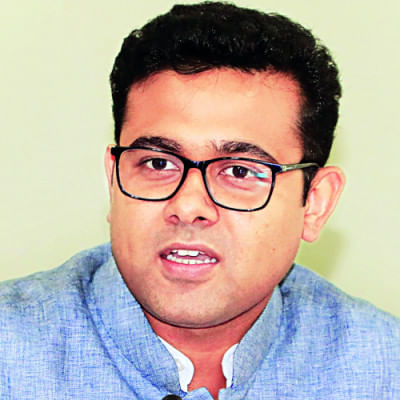
S M Shaikat, Executive Director, SERAC Bangladesh
The invisibility of unmarried adolescents within our overall system is concerning, given the staggering number of 36 million adolescents in our country. Surprisingly, we only have approximately 1,253 family planning centers. Outreach programs have proven to be more effective than center-based approaches, reaching 67,000 adolescents over the past 1.5 years. However, it is alarming that 15% of them are unaware of the available family welfare centers providing services for adolescents. The SBB messages on family planning to address the adolescent group need to be disseminated through proper channel.
The family planning department predominantly focuses on rural areas, but it is crucial to address the needs of urban areas as well. In the slum areas of Dhaka, for example, many female adolescents have not received the urgently needed services.

Moinuddin Haider, Associate Scientist, icddr,b
A significant portion of our research in the areas of population, family planning, and health is donor-driven, rather than meeting our own needs. Although the government does allocate funds for research in this field, limited time frames hinder meaningful studies. It is imperative to prioritize more need-driven research by securing government funding, engaging program implementers, and fostering collaboration among government agencies.
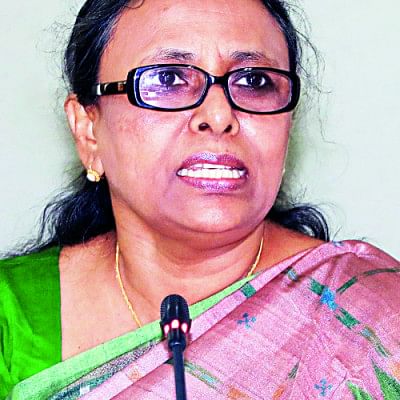
Samia Afrin, Project Director, Nari Pokkho
In our field experience, we have observed that women are often encouraged to adopt specific family planning methods without providing them adequate information about the potential variations in side effects, considering the hormonal nature of these methods and their individual responses. To genuinely uphold women's rights, it is imperative that we recognize their autonomy over their own bodies and provide them a range of family planning options.

Md. Mahbub ul Alam, Project Director, Shukhi Jibon, Country Director, Pathfinder International
The current framework for family planning predominantly emphasises population control rather than prioritising the improvement of maternal health. The primary goals revolve around reducing the total fertility rate (TFR) and contraceptive prevalence rate (CPR), and once these targets are near to be achieved, there tends to be a perception that our mission is complete. We need to put efforts equally and focus on relocating resources to regions like Khulna and Rangpur where TFR increased according to the BDHS 2022 survey report.
To address these challenges, it is crucial to shift our perspective and prioritize women's rights within family planning programmes. Rather than solely focusing on population control, we need to adopt a holistic approach that aims to improve the reproductive health of women. This requires going beyond numerical targets and instead emphasizing comprehensive care and sustained support throughout a woman's reproductive journey.
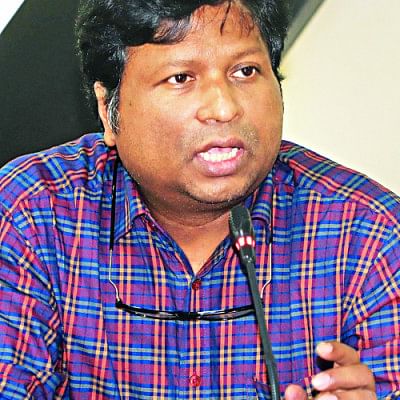
Zahirul Islam, Health Advisor, Swedish International Development Agency
Ensuring the availability of a diverse array of family planning services is vital to enable individuals to choose the methods that best suit their needs. It is equally crucial to emphasize the importance of localised planning efforts that take into account specific community needs and preferences.
Sweden, a leader in sexual and reproductive health rights (SRHR), has collaborated with UNFPA for family planning, midwifery, and primary healthcare. However, the number of programs and funding in this SRHR field is declining. Challenges also arise due to donor reservations, such as the USAID's funding restrictions on medical termination of pregnancy (MR). Despite these challenges, we must strive to achieve our targets in the family planning programme.

Dr Shafiqul Islam, Health & Population Advisor, British High Commission
We must develop a new visionary statement for family planning, expanding the role of the Directorate General of Family Planning (DGFP) to prioritize SRHR services, MNCH, gender equity, and women empowerment. This broader approach will help us overcome barriers in the last mile.
To improve our efforts, I propose targeted innovation with increased resource allocation. Currently, our health budget and allocation for family planning are inadequate, hindering our progress. Establishing a separate social media presence or expert group to reach diverse target groups and allocating a research budget of 10 crore taka per year for five years would facilitate policy formulation. Collaboration between DGFP and DGHS is vital to achieve our family planning targets. Lastly, effective coordination among all programs is crucial.

Farhana Jesmin, Senior Technical Advisor, SGBV, Ipas Bangladesh
We must address the multi-dimensional challenges faced by girls who experience child marriage, as they often lack access to education and empowerment opportunities. Collecting the opinions of women and girls opinion can ensure practical and innovative solutions. Research can help us understand why we struggle to incorporate women's perspectives, leading to more successful innovation outcomes. Currently, the government has acknowledged the importance of women and girls in the context of Family Planning 2030 (FP2030) and operational plans (OP) under the Strategic Investment Plan (SIP). Including women and girls throughout program stages will lead to significant results.
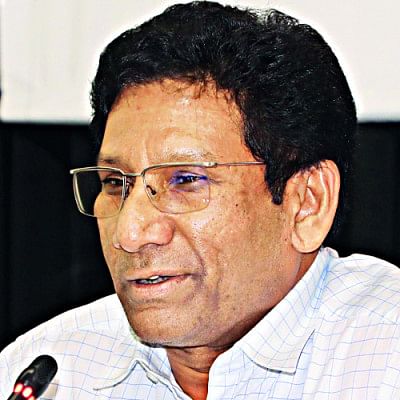
Dr Mahmudur Rahman, Director (MCH Services) & LD (MCRAH), Directorate General of Family Planning
We are currently focusing on providing maternal and child health (MCH)-based family planning support, while also striving to integrate comprehensive sexual and reproductive health and rights (SRHR) services into the family planning programme. In the 5th sector plan, we have also planned to include family planning services for elderly women.
Most family planning services are currently provided through private facilities under the Directorate General of Health Services (DGHS), with limited access for the Directorate General of Family Planning (DGFP). There should be a discussion on the roles of DGFP and DGHS in delivering comprehensive family planning services, especially in urban areas.
While we often mention "hard-to-reach" and "low-performing" areas, it is crucial to acknowledge the existence of "never-to-reach" areas, particularly in the Chittagong Hill Tracts region.
Regarding access to family planning methods for unmarried adolescents, I disagree with the notion that they lack access. All family planning methods are available in the market, and we have achieved significant progress in terms of universal access to contraceptives.
Lastly, I would like to emphasize the importance of three types of counselling: pre-marital counselling, pre-conception counselling, and post-partum family planning counselling. It is essential to ensure these three counselling services for everyone.

Dr Nurun Nahar Begum, Line Director (CCSDP), Directorate General of Family Planning
Our first challenge is to promote a rights-based approach to family planning by empowering girls and women to make decisions regarding their own lives, including family planning. We are working towards employing counselors at every stage of our interventions to ensure their support.
Additionally, it is crucial to clearly communicate and campaign about the availability of family planning and sexual and reproductive health services at health centers where these services are provided, facilitating easy access for the population.
In Bangladesh, an open market for short-term family planning methods such as oral pills and condoms has made these services easily accessible. Similarly, if we can establish an open market for permanent methods like IUDs and implants and disseminate information about them, it will greatly benefit the population.
During our discussion, we received valuable recommendations that will aid in the implementation of our upcoming Health, Population, and Nutrition Sector Programme.

Tanjim Ferdous, In-charge of NGOs and Foreign Missions at the Business Development Team, The Daily Star & Moderator of the session
Today's discussion centers primarily on adolescent girls, emphasizing their sexual and reproductive health and rights (SRHR). It also discusses matters related to family planning, encompassing socio-political dimensions. Within the realm of family planning, we will explore the agency of women in decision-making processes and strategies for empowering them, the value of incorporating women's perspectives when selecting contraception methods, and the importance of promoting health awareness.
Recommendations
- Family planning should be viewed from rights perspective.
- Ensure comprehensive family planning services for all women in the reproductive age group, irrespective of marital status and age.
- Raising awareness about Long-Acting Reversible Contraception (LARC) and other permanent methods is crucial.
- Develop inclusive family planning strategy that actively engage and target males, in addition to focusing on females.
- Establish social behavioral change communication strategy with social media cells to effectively disseminate family planning messages to a wider audience.Prioritise early pregnancy prevention efforts and encourage all national-level programmes to address and prevent child marriages.
- Increase funding and support for need-driven research on population, family planning, and health.
- Ensure the inclusion of unmarried adolescents in family planning programmes.
- Address the family planning needs in urban areas.
- Embrace mobile and social media platforms as effective channels for family planning communications.
- Provide comprehensive family planning training to frontline healthcare workers, including midwives, at the grassroots level, while also incorporating family planning education into all medical curricula.

 For all latest news, follow The Daily Star's Google News channel.
For all latest news, follow The Daily Star's Google News channel. 



Comments